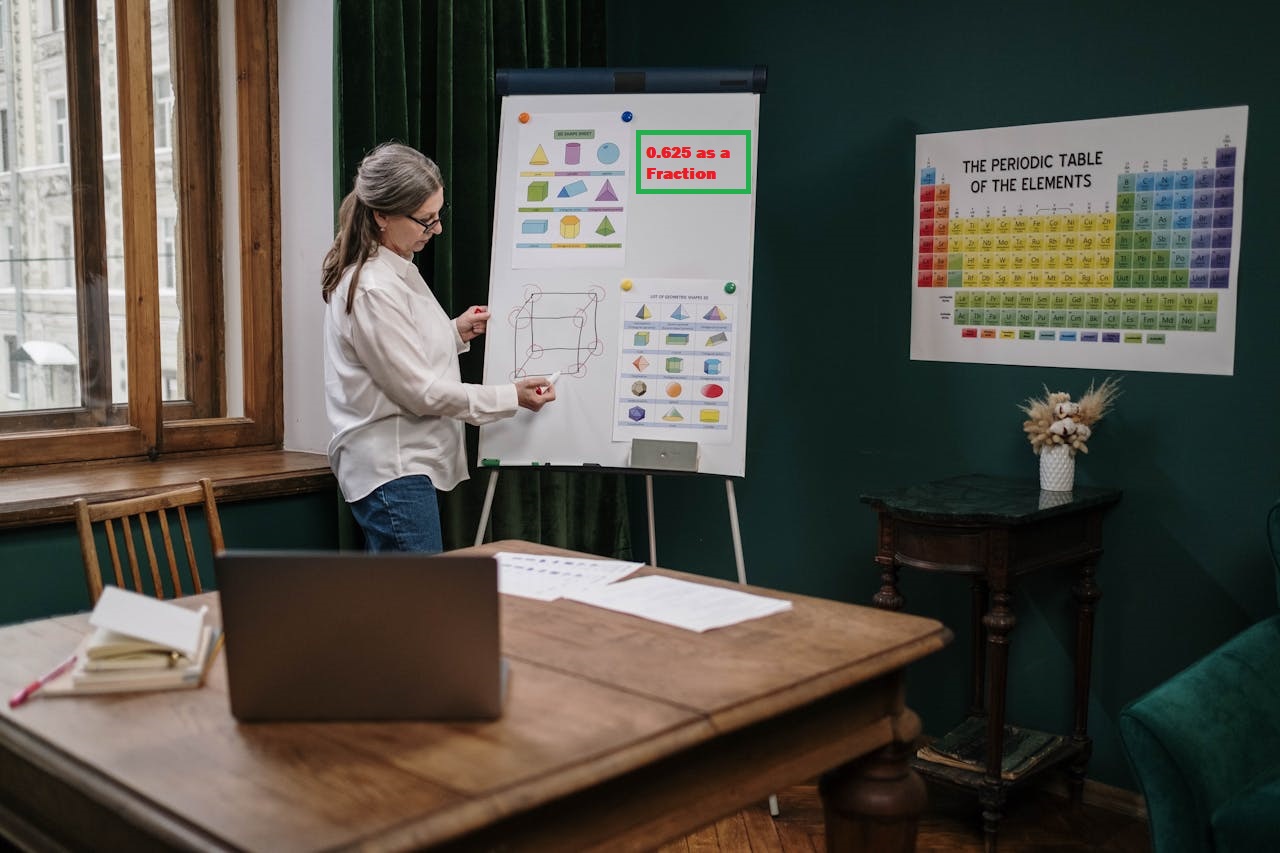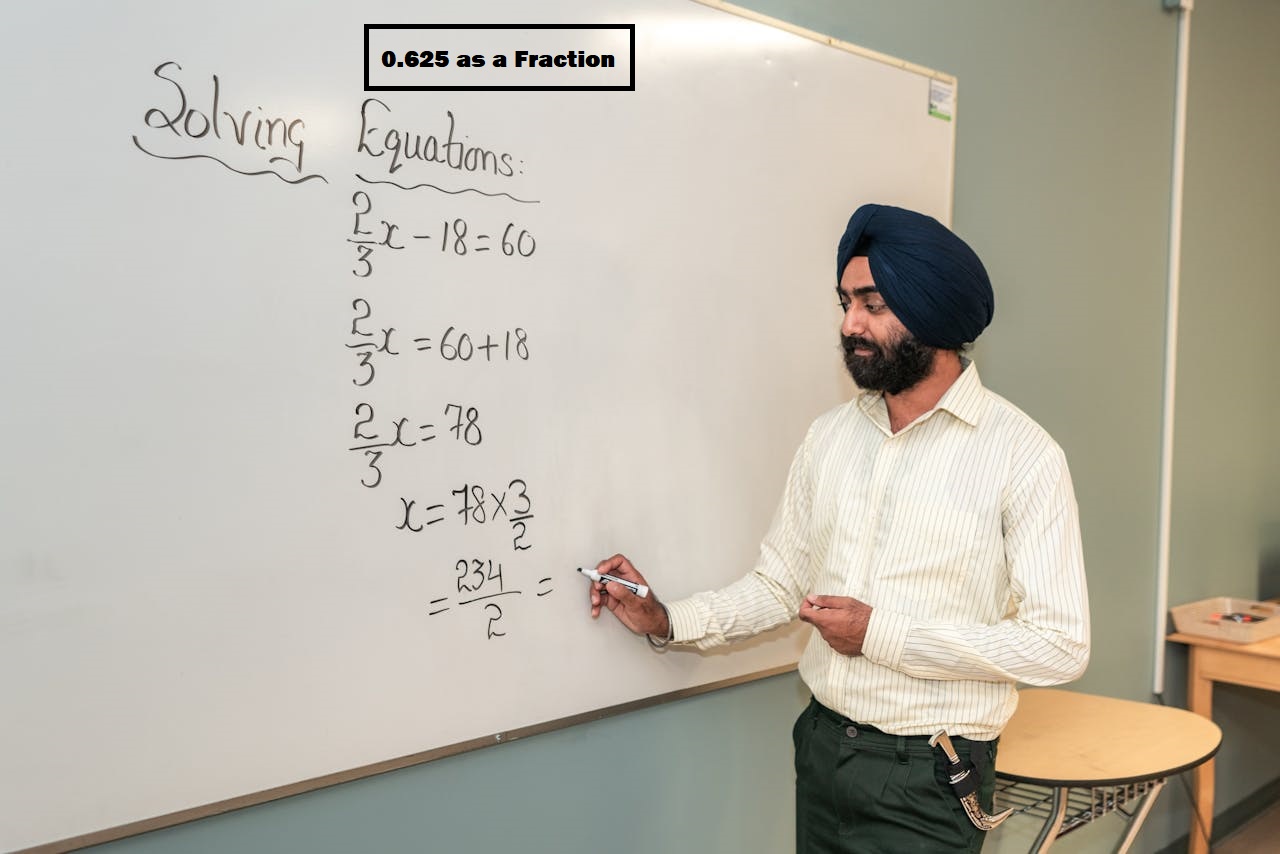
Understanding 0.625 as a Fraction
Fractions and decimals are two faces of the same mathematical coin, which represents the values differently. Although decimals find their application in scientific and financial arguments for accuracy, fractions provide us with an intrinsic perception of parts and wholes. The ability to convert from one form to another is not only a fortified mathematical background but also problem-solving in practical scenarios. In this blog, we will dissect exactly how to convert 0.625 to a fraction, discuss step by step, and see how knowing the conversion can benefit you in studying, cooking, building, budgeting, and beyond. By learning such easy yet fundamental skills, you will improve your numeracy and make every day simpler and more accurate.
What is 0.625 in Fraction?
The first step of converting 0.625 into a fraction is to check the position of the decimal point. Because 0.625 is three digits beyond the decimal point and we recognize 0.625 is in the thousandths place. Thus, we can write an equivalent fraction of 625 over 1000, 625/1000. Next we can reduce the fraction to simplest form by finding the greatest common factor in both the numerator as well as denominator. The mutual factor of 625 and 1000 is 125. By this reason we can divide both the numerator and denominator by 125 giving us 5/8. Therefore, the decimal 0.625 converted to a fraction in simplest form is 5/8. This process make it valuable as it builds our understanding of the connection between decimals and fractions.

Step-by-Step Conversion Process
To change 0.625 into fraction, start by writing it as 0.625/1, which means the decimal over one. After this to eliminate decimal point, multiply both by 1000. This results in 625/1000. The last step is to simplify the fraction. In order to accomplish this, determine the greatest gommon divisor (GCD) of 625 and 1000, which is 125. So, in simple form 0.625 is 5/8 as a fraction.
Why Change Decimals to a Fractions?
Turning fractions into decimals plays an important role, enhancing accuracy and understanding of this numbers across many everyday situations. Fractions offer more precision because they link to exact measurements in jobs like engineering, building design, and woodworking. These fields need spot-on measurements, and using fractions tends to give more accurate results than using decimals. Additionally, the arithmetic aspect (addition, subtraction, or comparison) is usually easier to dispose of in fraction’s rather than decimals…particularly when fractions have commercially common denominators. Finally, switching between decimals and fractions adds greater meaning and understanding of numbers and their relationships to one another, which potentially enhances numeracy skills, as a person can more effectively address problems and assess quantitative data in everyday life.
Real-world applications of 0.625 as a Fraction
Recognizing that 0.625 is equivalent to 5/8 is very beneficial in everyday life in various ways. In the kitchen, recipes often require an amount of, say, 5/8 of a cup when quantities are multiplied. In the building or carpentry business, material and tool sizes are described in fractional inches, including 5/8 inches. Financially speaking, interest rates, stock share value, or ratios are usually expressed as decimals but may be easier to wrap your brain around as fractions. Understanding conversions quickly between 0.625 and 5/8 means accuracy and efficiency are maximized, providing consumers with what they need to make the right choices and act precisely in their circumstances.
Conclusion
Turning decimals like 0.625 into fractions might seem like elementary calculation ability, but this exercise is crucial because it fosters an expansive, flexible understanding of numbers and their uses in our lives as consumers. The ability to see 0.625 as 625/1000 and then reduce that to 5/8 means not only do you understand a little more of the complexity with decimal places, but you also increase your fluency converting this very quickly. These conversions can help us anytime we measure or quantify things in our lives (e.g., recipes, quantity of materials in construction, terms of financial data). Building fluency with converting decimals to fractions will help us become more comfortable with the numbers we work with and help us make fewer mistakes and with confidence. So, next time you see 0.625, you will know it is equal to 5/8.
Recent Post
 Mollygram for Small Business Branding A Beginner Friendly Guide
Mollygram for Small Business Branding A Beginner Friendly Guide ParityTrial.com – A Fresh Take on Daily News & Insight
ParityTrial.com – A Fresh Take on Daily News & Insight Introducing Adrian CryptoProNetwork – Your Comprehensive Guide to Crypto Knowledge
Introducing Adrian CryptoProNetwork – Your Comprehensive Guide to Crypto Knowledge Market Better With FeedBuzzard: The Next Generation of Digital Marketing
Market Better With FeedBuzzard: The Next Generation of Digital Marketing QuikConsole: The All-In-One Digital Productivity Solution for Today’s Teams
QuikConsole: The All-In-One Digital Productivity Solution for Today’s Teams Artaverse.org Tech Global News: Timely Updates on Culture and Innovation
Artaverse.org Tech Global News: Timely Updates on Culture and Innovation How Timewarp TaskUs Is Revolutionizing Digital Workplaces
How Timewarp TaskUs Is Revolutionizing Digital Workplaces Exploring Top AI Tools: Perplexity, DeepSeek, ChatGPT, and Google Gemini
Exploring Top AI Tools: Perplexity, DeepSeek, ChatGPT, and Google Gemini
Calender
| M | T | W | T | F | S | S |
|---|---|---|---|---|---|---|
| 1 | 2 | 3 | 4 | 5 | 6 | 7 |
| 8 | 9 | 10 | 11 | 12 | 13 | 14 |
| 15 | 16 | 17 | 18 | 19 | 20 | 21 |
| 22 | 23 | 24 | 25 | 26 | 27 | 28 |
| 29 | 30 | 31 | ||||








Leave a Reply